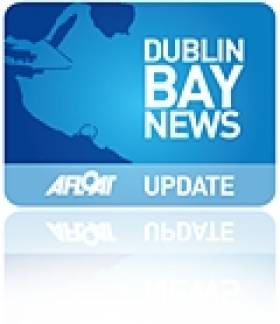Displaying items by tag: NMMI
#MarconiDays – To celebrate the 115th anniversary of the first radio report of a sporting event with a sailing race in Dublin Bay, the National Maritime Museum of Ireland, Dun Laoghaire will be staging Marconi Days this week between 19-21 July, writes Jehan Ashmore.
Importantly it was the Kingstown Regatta of 1923 which played a big part in radio history, where the wireless communications pioneer Guglielmo Marconi (whose mother was Irish) conducted the first ship-to-shore telegraphic transmissions of a sporting event.
The regatta results were received at the Harbourmaster's House (currently Moran Park House), in front of the Royal Marine Hotel from where Marconi was based and where a guest suite is named in his honour.
On each of the Marconi Days, there will be tours, demonstrations and refreshments available to museum visitors. For further information contact the NMMI Tel: (01) 2143964 or by email: [email protected]
Open House Dublin takes to the Water
#OPEN HOUSE – Starting today is Open House Dublin weekend (5-7 October), which is an exploration of the vitality of Dublin through its architecture for people and to experience free of charge. A host of buildings otherwise normally closed to the general public are available to visit including maritime related tours.
An architectural tour of Dublin's Docklands quarter on board a Liffey sightseeing boat is to be presented by Minister for Education Ruairi Quinn T.D. Also taking transport while on a tour of buildings along Dun Laoghaire will be a yacht excursion along the south Dublin Bay coastline.
The Commissioners of Irish Lights, whose striking landmark headquarters in Dun Laoghaire Harbour, will be open to public tours. Further along the waterfront, close to the harbour's East Pier, is the National Maritime Museum of Ireland (NMMI) which is also to welcome visitors noting the opening hours on Sunday are between 11am to 5pm.
Please note that availability to these events which represent a handful in an extensive programme are subject to various viewing arrangements, as some had to be pre-booked, while others are based on a first-come first-served basis. For further details consult www.openhousedublin.com
Summer BBQ in aid of National Maritime Museum
#MARITIME MUSEUM BBQ – Live music and a full bar are to accompany a Summer BBQ party to be held on Saturday 14 June (8pm) in the Dún Laoghaire Club, in aid of the town's National Maritime Museum of Ireland (NMMI).
Tickets for the barbecue cost €12.00 and are available from the NMMI located in the former Old Mariners Church on Haigh Terrace or at the door of the Dún Laoghaire Club on Eblana Avenue off Marine Road.
For further information of the mid-July evening event contact: 01-2143964 and in general for opening times and activities of the museum which is run by the Maritime Institute of Ireland visit www.mariner.ie
Dun Laoghaire Harbour's Sunday 'Family-Funday'
Opening times are 11am to 5pm and the entry fee is €3 for adults and children go free. The Funday is to help raise funds to support the local national maritime museum of Ireland in Dun Laoghaire. The Maritime Institute of Ireland is a registered charity, which run the museum through volunteers. In addition they host lectures, represent maritime interests and operate a museum and library.
The museum is housed in the former Mariners Church and is currently closed due to renovation and improvement works. There will be a 'soft launch' or 'preview' of the museum from October to mark the M.I.I.'s 70th anniversary.
Next year the museum is due to be officially re-opened during the Easter. The M.I.I. welcomes new members, volunteers and donations. For further information visit www.mariner.ie
- Pirates
- Carlisle Pier
- Dublin Bay News
- Maritime Institute of Ireland
- Dun Laoghaire Harbour
- M.I.I.
- Mariners Church Dun Laoghaire
- Dun Laoghaire Harbour News
- Irish maritime museums
- Family Funday
- DART Dun Laoghaire
- DART railway
- Pirats and Princesses competition
- Irish maritime interests
- Irish maritime lectures
- Irish maritime library
- National Maritime Museum of Ireland
- NMMI



























































